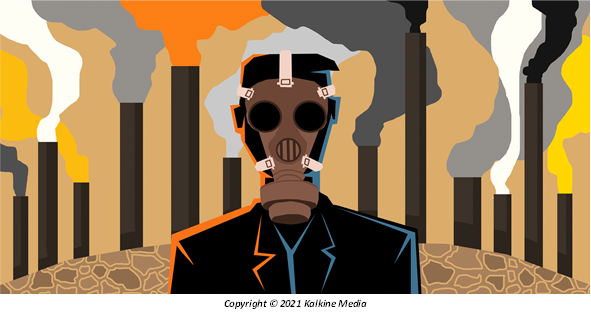What is carbon neutrality?
Carbon neutrality can be defined as a situation wherein the amount of carbon released into the atmosphere and the existing carbon level in the air is completely offset by the amount of carbon removed from the air. This means in a carbon neutral scenario net carbon emission is zero.
However, carbon neutrality does not simply mean no emission of carbon into the air at all. Rather, it is the practice of balancing the number of emissions removed to the number of emissions released.
Many businesses and organizations also use the term carbon neutrality to include all greenhouse gas emissions. These organizations must set their target for carbon neutrality and even countries set a target by which they would reduce their emissions.
Summary
- Carbon neutrality refers to a state of balance between the carbon emissions released into the environment and the emissions removed from it.
- The concept of carbon neutrality is not just forward looking but is also aimed at balancing the amount of carbon pre-existing in the atmosphere.
- The objective of firms that adopt carbon neutrality is bringing down net carbon emission to zero.
Frequently Asked Questions (FAQs)
Why is there a need to go carbon neutral?
The evidence of climate change is visible through melting glacier tops and overall increase in global temperatures. Extreme weather conditions like drought, heavy rain, heat waves, wild fires, landslides and floods have become more frequent. Additionally, there is the persisting issue of rising sea levels, loss of resources and biodiversity.

A carbon neutral version of a product is much better for the environment than the carbon-producing equivalent. Organizations are understanding the triple-bottom line impact left behind by greenhouse gas emissions.

Dried, cracked earth, Image Source: © Laroach | Megapixl.com
The Intergovernmental Panel on Climate Change (IPCC) has stated that if planet warming reaches an average higher than 1.5 degrees Celsius then it would be the point of no return for climate change. Carbon neutrality forms a large part of the solution to this issue. The current global aim set by leading nations together is to bring net emissions down to zero by 2050.
Most commercial activity carried in our daily lives leave behind a carbon footprint. This footprint is easy to release but hard to remove from the atmosphere. Thus, a combined action plan is required by countries, detailing the efforts they want to take to mitigate the climate crisis.
How is carbon neutrality different from net zero and climate neutrality?
Carbon neutral simply means not releasing carbon into the air and removing the already present from the atmosphere. This can be done by adopting carbon-free methods of production and a carbon-free lifestyle.
On the other hand, net zero emissions not only pertain to carbon, but also to all greenhouse gases that are released. This is a broader definition and more appropriate one for firms and organizations looking to make a change. Under net zero emissions, the aim is to reduce the release of gases like methane, nitrous oxide, and fluorinated gases alongside carbon. The remaining amount of these gases that cannot be removed from the environment must be offset.
Climate neutrality is an even broader term encompassing both the above goals in it along with the aim of eliminating all harmful impacts left behind by organizations. Often, these words get mixed and mistake for each other. Many sustainability experts use the term carbon neutrality interchangeably with net zero emissions.
How can carbon neutrality be achieved?
The following steps can be taken by nations to move one step closer to carbon neutrality:
- Using Renewable Energy: Most industries have the capacity to operate on renewable sources of energy like wind and solar powered equipment. The aim here is to reduce the consumption of coal, gas, and oil powered machinery.
Short-range transport can be made electric with battery powered motors. This would also contribute to the reduction of air pollution.

Electric car charging, Image Source: © Annazasimova | Megapixl.com
- Changes at the Industry level: It is harder to make heavy industrial sectors electric compared to other industries. Additionally, transportation areas of shipping, aviation, and long-distance transport face logistical issues in moving towards green energy.
A different plan of action is required for these sectors with new solutions to the problem. One such solution that can be adopted by the steel manufacturing industry is using hydrogen instead of cooking coal as a reduction agent. On the other hand, long-distance aviation can adopt the practice of using biofuels or synthetic fuels, long-distance ships could switch to ammonia or biofuel and on-road transport could look at electric motors as a potential alternative.
- Changes in the Agricultural Sector: Cattle and livestock farms contribute greatly to harmful emissions in the environment. Farms holding livestock produce high levels of methane, a greenhouse gas. The easiest solution to this is to eat less meat and switch to more plant-based food.
- Not Forgetting Pre-Existing Emissions: Since the released greenhouse gases cannot be taken back completely, methods that lessen their harmful effects should be adopted. These methods include preserving forests, mangroves, soil, and underground seaweed forests, which are highly efficient in absorbing carbon.
What is carbon offsetting?
Carbon offsetting is an efficient method for organizations to offset that part of carbon emissions that cannot be removed from the atmosphere. This can be done by financing projects that reduce carbon emissions elsewhere through processes like carbon sequestration.
Carbon offsetting can be done in two ways, by compensating and neutralizing. Compensation involves removing emissions caused outside of the company’s value chain, while neutralization involves the removal of emissions within or beyond the value chain. Thus, companies have the option of reducing someone else’s carbon footprint to provide their contribution to the cause.
 Please wait processing your request...
Please wait processing your request...